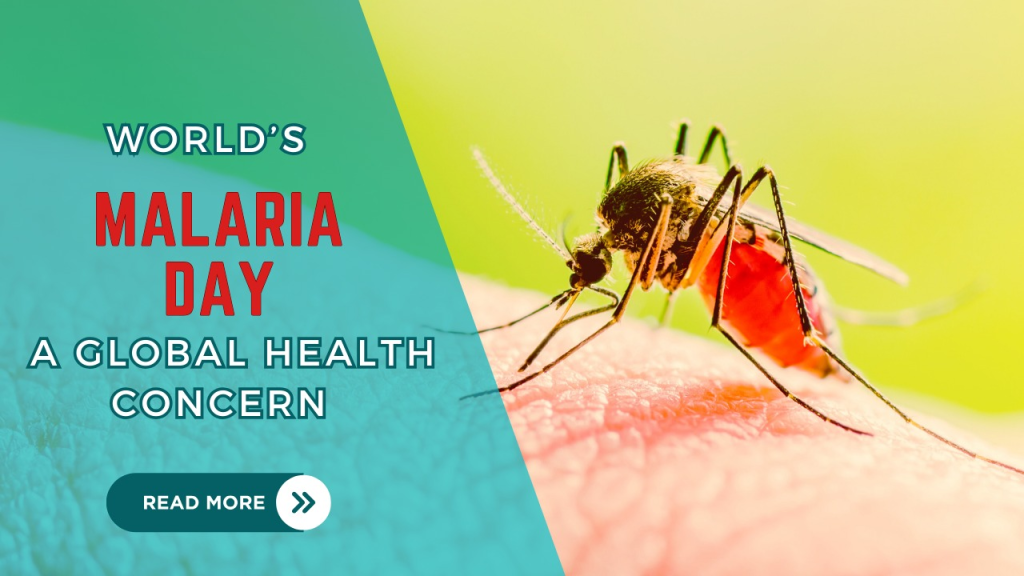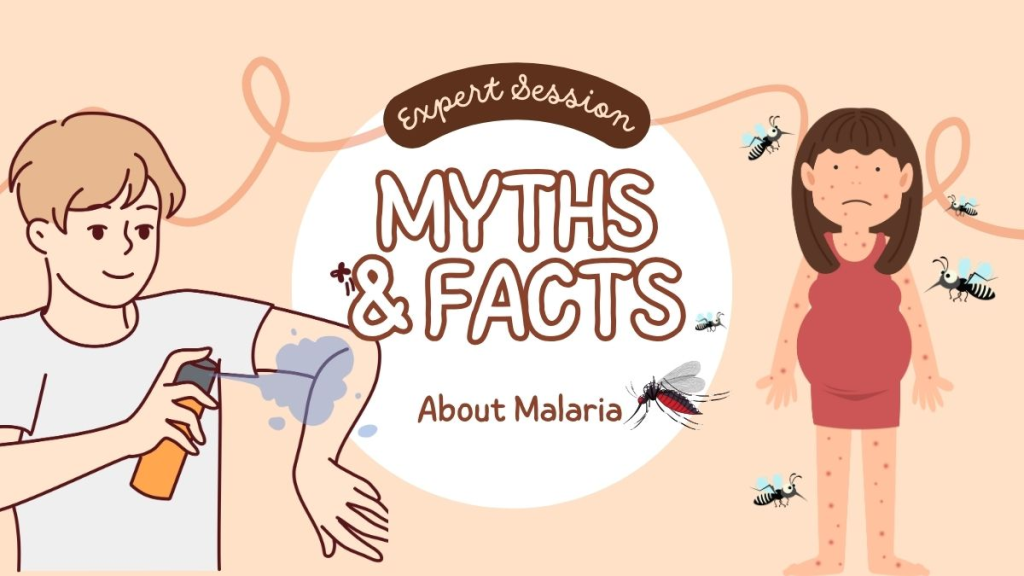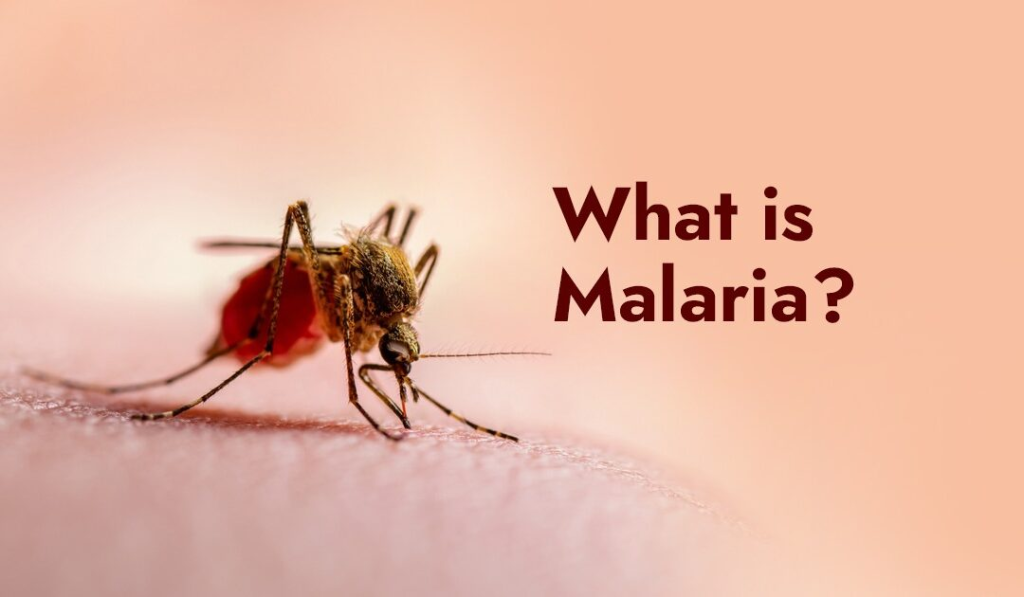
Malaria is a life-threatening disease caused by Plasmodium parasites, transmitted to humans through the bites of infected Anopheles mosquitoes. Despite significant progress in reducing malaria cases globally, it remains a major health concern, particularly in tropical and subtropical regions. Awareness, prevention, and prompt treatment are vital in the fight against malaria.
Causes of Malaria
Malaria is caused by five types of Plasmodium parasites:
- P. falciparum: The most deadly and common species.
- P. vivax: Known for causing relapsing malaria.
- P. ovale: Found mostly in Africa and the Pacific Islands.
- P. malariae: A less common form with long incubation periods.
- P. knowlesi: A zoonotic species found in Southeast Asia.
Transmission occurs through the bite of an infected female Anopheles mosquito, blood transfusion, organ transplants, or shared needles.
Indications of Malaria
Recognizing the early signs of malaria is crucial for timely treatment. Key indications include:
- Fever and chills, often cyclical.
- Sweats followed by a drop in temperature.
- Fatigue and weakness.
- Headaches or body aches.
- Loss of appetite and nausea.
Symptoms of Malaria
Malaria symptoms range from mild to severe and may include:
- Uncomplicated Malaria:
- High fever.
- Profuse sweating.
- Chills.
- Muscle pain.
- Headache and nausea.
- Severe Malaria:
- Cerebral malaria (seizures or coma).
- Severe anemia.
- Organ failure (kidneys, liver).
- Difficulty breathing.
- Hypoglycemia.
Prevention Strategies for Malaria
Preventing malaria requires an integrated approach that includes:
- Mosquito Control:
- Use insecticide-treated bed nets (ITNs).
- Indoor residual spraying (IRS).
- Eliminate standing water to reduce mosquito breeding.
- Personal Protection:
- Wear long-sleeved clothing.
- Use mosquito repellents containing DEET.
- Stay indoors during peak mosquito activity (dusk to dawn).
- Preventive Medications:
- Take prophylactic antimalarial drugs when traveling to endemic areas.
- Vaccination:
- The RTS,S/AS01 (Mosquirix) vaccine is a promising development for malaria prevention in children.
Myths and Facts About Malaria

- Myth: Malaria only occurs in Africa. Fact: Malaria exists in Asia, South America, and parts of the Middle East as well.
- Myth: Malaria is caused by bad air (“mal aria”). Fact: Malaria is caused by Plasmodium parasites, not air.
- Myth: Once you recover from malaria, you’re immune for life. Fact: Immunity, if developed, is often partial and does not prevent reinfection.
- Myth: All mosquitoes cause malaria. Fact: Only female Anopheles mosquitoes can transmit malaria.
Treatments and Therapy
Medication-Based Treatments
- Artemisinin-based Combination Therapies (ACTs): First-line treatment for P. falciparum malaria.
- Chloroquine: Effective for P. vivax and P. ovale in areas without resistance.
- Primaquine: Used to eliminate dormant liver stages (hypnozoites) of P. vivax and P. ovale.
- Quinine and Doxycycline: For severe malaria or cases resistant to other drugs.
Surgical Treatments
- Rarely required; may involve treating complications such as spleen rupture.
Physical Therapy and Rehabilitation
- Recovery from severe malaria may involve nutritional support and physical therapy for muscle weakness.
Lifestyle and Behavioral Interventions
- Maintain hydration and balanced nutrition during recovery.
- Follow prescribed medication regimens strictly to prevent relapse.
Alternative and Complementary Medicine
- Herbal remedies like artemisia extracts have historical relevance but should not replace scientifically validated treatments.
Psychotherapy and Counseling
- Support for individuals dealing with post-treatment fatigue or emotional distress.
Immunizations and Vaccines
- RTS,S/AS01 Vaccine: Provides partial protection against P. falciparum in children.
Stem Cell Therapy
- Currently not applicable to malaria treatment.
Gene Therapy
- Emerging research explores gene editing in mosquitoes to prevent malaria transmission.
Top 20 FAQ on Malaria

1. What causes malaria?
Malaria is caused by Plasmodium parasites, which are transmitted to humans through the bites of infected female Anopheles mosquitoes.
2. Can malaria be cured?
Yes, malaria can be effectively treated with antimalarial medications, such as Artemisinin-based Combination Therapies (ACTs) for most cases.
3. What are the early signs of malaria?
Early symptoms include:
- Fever and chills.
- Sweating.
- Headaches.
- Muscle aches.
- Fatigue.
4. Who is most at risk for malaria?
- Pregnant women.
- Children under five years old.
- People living in or traveling to malaria-endemic regions.
- Individuals with weakened immune systems.
5. How can malaria be prevented?
- Use insecticide-treated mosquito nets (ITNs).
- Take antimalarial prophylactic drugs when traveling to high-risk areas.
- Eliminate mosquito breeding grounds by removing stagnant water.
- Use insect repellents and wear protective clothing.
6. Is malaria contagious?
No, malaria cannot be transmitted directly from person to person. It requires the bite of an infected mosquito to spread.
7. What are the complications of severe malaria?
Severe malaria can lead to:
- Cerebral malaria (affects the brain).
- Severe anemia.
- Organ failure (e.g., kidneys or liver).
- Hypoglycemia.
8. Can you get malaria more than once?
Yes, repeated infections are possible, particularly in regions where malaria is endemic. Immunity develops partially over time but does not provide complete protection.
9. What is the best treatment for malaria?
Artemisinin-based Combination Therapies (ACTs) are the recommended first-line treatment for most cases of malaria.
10. Are vaccines available for malaria?
Yes, the RTS,S/AS01 vaccine, also known as Mosquirix, provides partial protection against malaria and is currently recommended in high-risk areas.
11. Does malaria have long-term effects?
In severe cases, malaria can lead to lasting complications, such as organ damage or neurological issues, especially in cerebral malaria.
12. How is malaria diagnosed?
Malaria is diagnosed through blood tests, including:
- Microscopic examination to detect Plasmodium parasites.
- Rapid diagnostic tests (RDTs) for quicker identification.
13. Can malaria be prevented during travel?
Yes, travelers can reduce their risk by:
- Taking prescribed antimalarial prophylactics.
- Using mosquito repellents and bed nets.
- Staying indoors during peak mosquito activity times (dusk and dawn).
14. Why is malaria more common in certain regions?
Malaria is more prevalent in warm, humid climates where mosquitoes thrive, such as sub-Saharan Africa, South Asia, and parts of Latin America.
15. Are there drug-resistant strains of malaria?
Yes, drug-resistant strains of Plasmodium falciparum have emerged in some regions, especially in Southeast Asia, making treatment more challenging.
16. What is cerebral malaria?
Cerebral malaria is a severe form of malaria that affects the brain, leading to symptoms such as seizures, confusion, or coma. It requires immediate medical attention.
17. Can pregnant women take antimalarial drugs?
Yes, but only specific drugs deemed safe for pregnancy, such as sulfadoxine-pyrimethamine or mefloquine, are recommended under medical supervision.
18. What is relapsing malaria?
Relapsing malaria occurs when dormant liver-stage parasites (P. vivax or P. ovale) reactivate, causing repeated episodes of illness even after initial treatment.
19. How long does it take to recover from malaria?
Recovery depends on the severity of the infection, but most individuals recover within a few weeks with prompt and proper treatment.
20. What global efforts are in place to eradicate malaria?
Global initiatives include:
- The World Health Organization’s (WHO) Global Technical Strategy for Malaria, aiming to reduce malaria cases and deaths by 90% by 2030.
- Distribution of insecticide-treated nets and vaccines in high-risk regions.
- Ongoing research into new drugs, vaccines, and mosquito control methods.
Conclusion: Winning the Fight Against Malaria
Malaria continues to be a formidable global health challenge, but through a combination of prevention, timely treatment, and innovative research, significant progress is being made. Public health efforts, community awareness, and advances in medical science have reduced the burden of this disease in many regions. However, achieving complete eradication requires global collaboration and sustained commitment. By prioritizing education, access to resources, and widespread use of preventive measures, we can ensure a healthier future for all, free from the threat of malaria.
Related video: